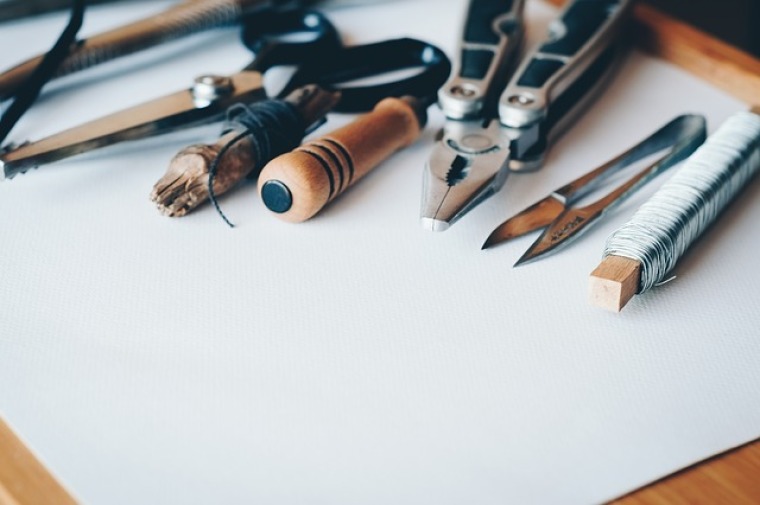
Have you ever stared at a hand-carved wooden bowl and marvelled at the smoothness of finish and delicacy of wood grain? Beheld a painting and wondered how the moment or character could all be so perfectly captured? Or have you, even once, worn a piece of clothing and been satisfied by every colour, cut, pattern or well-placed pocket?
Exquisite pieces of craftsmanship are created with an eye to detail and with focused attention. Every aspect is cared for, whether small and simple or complex. They are well-made, hand-made crafted quality.
Such things remind us that craftsmanship is a craft and a craft is not just a children's game or inconsequential hobby.
Broadly speaking, if something is crafted then you know special attention was given to its making; the maker thoughtfully considered each tiny little minutia while never losing sight of the whole, grand design.
In our world of quick fixes to annoying problems, media, entertainment and easy thrills are we forgetting what craftsmanship is?
We have forgotten such a thing before.
A historical illustration
The last half of the nineteenth century in Britain was a time of such forgetting. It was a time of the rise of the consumer class and of manufacturing consumer goods. Industrialisation was increasing for better and for worse. More and more industry was mechanised. Division of labour became common.
Labourers no longer required great skill to work; their work was alienating and dehumanising. A man would not craft something from beginning to end anymore but operated a machine or worked on a part and moved it on like a machine.
Workers travelled into overcrowded, sickness-ridden urban areas and living conditions were terrible. The rich grew richer, the poor trudged on.
People designed and made and bought things just because they could; no matter how terrible it looked or the low-brow taste it showed, no matter the necessity or benefit of doing such a thing. Mass-production and banality prevailed. Mindless consumerism ensued.
In the race for progress and the search for novelty people had forgotten what craftsmanship was. We can see the same trouble today even if the expression differs.
Taste a social concern
Some during this period became 'profoundly disturbed by the level to which style, craftsmanship, and public taste had sunk...' (para. 2, Art and Crafts Movement)
To these philosophers, artists and architects the industrialisation of the time was not the inevitable, unchangeable marching onwards of time but a matter of great social concern because mindless, numb working bred mindless, numbed living.
They yearned for the return of craftsmanship, of a workshop and marketplace where man could be man and humanly so. They desired to see labour and art reunited so that beauty, simplicity, functionality, integrity and nature could return to daily life.
William Morris and others advocated for reform and then they did something about it. They developed new business models and lived alternate lifestyles. They produced work that reflected their longing for a better life and furnished this better life with appropriately well-made goods. Subject matter, means of production and materials were all thoughtfully considered.
The ultimate example and motivation
In light of a similar culture of consumption, such a return to craftsmanship is a skill that we too must practise if we are to avoid living thoughtless, machine-driven lives. A careful consideration of every part making up the whole needs to be made.
It is all too easy to fill our lives with cheap things and live carelessly but we ought to be mindful about our lives, living with artistry, as craftsmen at their work. This is especially true because we know that there is one, ultimate Craftsman, our Creator, who will one day call us to account for our lives.
When God made the world His all-encompassing, all-knowing mind allowed Him to craft everything to perfection. The order was considered, the place of each and every thing organised and the universe set in motion. Nothing was amiss until we rebelled.
Yet, even our rebellion and sin against God—ongoing as it is to this day—was not enough to waylay the power of God's determined will and design. He has been pleased to sustain the world and make a way for us to be restored to Him. All we need do is repent and believe in the Lord and Saviour Jesus Christ; turn from our evil, inconsiderate ways and trust that Christ is who He says He is. He is the way, the truth, and the life (John chapter 14, verse 6).
Practise looking, practise being awed
If you've never loved the simple smoothness of a hand-made wooden bowl, never wondered over the skill of a master painter or been satisfied by a well-crafted garment then maybe you need to look (and think) again.
Better yet, stare at a wand of lavender and marvel at how one flower is made up of many smaller, perfectly formed petals; behold the full moon and be amazed at how it lights up the world giving light to see in the midst of pitch darkness; hold a little child and feel their warm little breaths and small heart quickly beating—think, how can such loveliness exist!
Be in awe that this world has been made for and gifted to us. Though we ruined it and ruin it still daily by our sin God even now graciously provides salvation and restoration in Christ, reminding us never to take such things for granted.
In goods, lifestyle and ultimately in God's purposes and offer of salvation in Jesus Christ craftsmanship can still be found. It is something to admire, meditate on and pursue in everyday living.

Irenie How is young yet, by the grace of God, was saved while she was running away from and fighting against Him. God showed her that He is the Lord and she wants you to know this too. After becoming a Christian she finished studying to become a graphic designer and as this she currently works full-time in Christchurch, New Zealand.
Irenie How's previous articles may be viewed at http://www.pressserviceinternational.org/irenie-how.html

Irenie How was rescued from darkness by the grace of God when she was running away; God showed her He is the Lord and she wants you to know this too. She is trying to read, draw, love, move forward, and live every day. Check out some of her work on Instagram (@irenie.anne or @anaplangent).
Irenie How’s previous articles may be viewed at www.pressserviceinternational.org/irenie-how.html